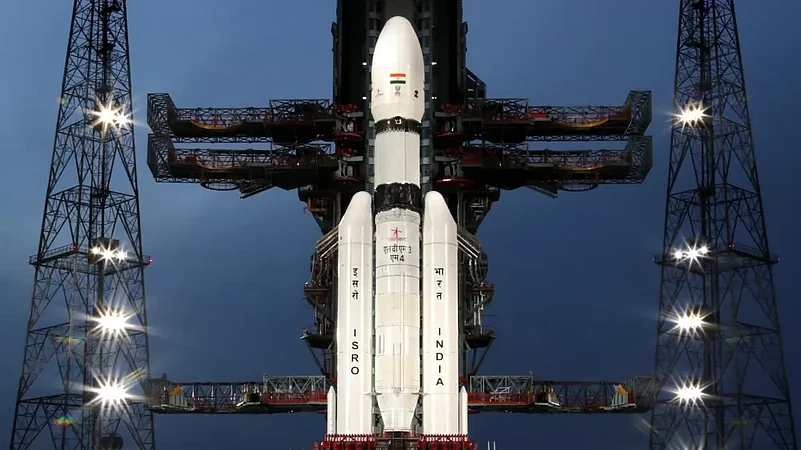As India’s Chandrayaan-3 mission reaches the two-year milestone of its historic soft landing on the Moon’s south pole, fresh scientific analyses from its instruments are shedding light on the lunar surface’s ancient geology and resource potential. Launched amid high expectations following the partial setback of Chandrayaan-2, the mission’s data continues to inform global lunar research, even as the Indian Space Research Organisation (ISRO) navigates budget constraints and international collaborations for future probes.
On August 23, 2023, the Vikram lander touched down at a site now officially named Shiv Shakti Point by Prime Minister Narendra Modi, making India the fourth country—after the Soviet Union, the United States, and China—to achieve a controlled lunar landing. The mission’s rover, Pragyan, traversed about 100 meters across the rugged highland terrain near the south pole, conducting experiments until the onset of the lunar night in September 2023, when extreme cold halted operations. The propulsion module, meanwhile, was maneuvered back to Earth orbit in late 2023 for additional Earth-observation tasks, extending the mission’s utility beyond its initial lunar focus.
Recent findings, drawn from instruments like the Chandra’s Surface Thermophysical Experiment (ChaSTE) and the Alpha Particle X-ray Spectrometer (APXS) on Pragyan, have revealed unexpected details about the Moon’s thermal and compositional profile. A March 2025 study published by ISRO scientists highlighted significant spatial variability in surface temperatures at meter scales in high-latitude regions—contrasting with the more uniform patterns observed near the equator. This variability, measured over 10 Earth days during the mission’s active phase, suggests that subsurface conditions could preserve volatiles like water ice more effectively than previously modeled, particularly in sloped areas exceeding 14 degrees incline.
“These temperature gradients provide ground-truth data that refines our remote-sensing models from orbiters like Chandrayaan-2,” said Dr. Annapurna Bhogavalli, a geophysicist at the Physical Research Laboratory in Ahmedabad, in an interview. “It’s not just about the south pole; it helps predict habitable zones for future robotic or human outposts.” The discovery aligns with broader international efforts, including NASA’s Artemis program, which targets the same region for its resource-rich shadowed craters.
Compositionally, APXS and Laser-Induced Breakdown Spectroscopy (LIBS) scans detected elevated levels of sulphur and primitive mantle materials at Shiv Shakti Point, indicating the site dates back approximately 3.7 billion years. In April 2025, ISRO reported the identification of an ancient 160-km-wide buried crater about 350 km from the landing zone, using Pragyan’s images cross-referenced with Chandrayaan-2 orbiter data. This crater, filled with debris from the massive South Pole-Aitken basin, offers clues to the Moon’s bombardment history and early differentiation processes.
The Instrument for Lunar Seismic Activity (ILSA) on Vikram recorded around 50 short seismic events, potentially from micrometeorite impacts or thermal cracking, adding to the sparse dataset on lunar quakes in polar areas. Such observations, while preliminary, underscore the mission’s role in validating models for seismic hazards on airless bodies.
| Key Scientific Findings from Chandrayaan-3 (2023-2025) |
|---|
| Instrument |
| ChaSTE (Thermal Probe) |
| APXS & LIBS (Composition) |
| Pragyan Imaging |
| ILSA (Seismometer) |
Yet, the mission’s legacy extends beyond science. At a cost of ₹615 crore—far below comparable efforts like NASA’s Perseverance rover, which exceeded $2.7 billion—Chandrayaan-3 exemplified ISRO’s emphasis on frugality and indigenous engineering. The lander’s four variable-thrust engines addressed lessons from Chandrayaan-2’s 2019 crash, enabling a precise descent amid boulders and craters. International support, including ground-station tracking from the European Space Agency (ESA) and NASA’s Lunar Reconnaissance Orbiter reflecting a laser from Vikram’s retroreflector, highlighted growing multilateral ties.
Challenges persist, however. The one-lunar-day operational limit (about 14 Earth days) restricted rover mobility, and power constraints prevented a planned “hop” experiment to test relocation capabilities. Critics, including some space policy experts, argue that ISRO’s reliance on government funding—amid competing priorities like the Gaganyaan human spaceflight program—could strain resources for sample-return ambitions.
Looking ahead, Chandrayaan-3’s data is now open for global analysis through an ISRO announcement of opportunity issued on September 1, 2025, inviting researchers to propose studies using the lander and rover payloads. This comes as ISRO advances to Chandrayaan-4, slated for 2027-2028, which will attempt a sample return from the lunar equator in collaboration with Japan’s JAXA. In March 2025, the government greenlit Chandrayaan-5, featuring a 250-kg rover for south pole studies, signaling a pivot toward heavier, more capable hardware.
“Chandrayaan-3 was a proof-of-concept, but the real test is sustainability,” noted Ravi Prakash, a former ISRO mission director. “With private sector involvement rising—through firms like Skyroot and Agnikul—we’re seeing a shift from state monopoly to ecosystem building.” Still, questions linger over timelines: Gaganyaan’s crewed flight, targeted for 2028, faces delays due to crew module testing, while geopolitical tensions could complicate joint ventures.
As India commemorates the mission’s anniversary—coinciding with National Space Day on August 23—the focus remains on tangible outcomes. Educators have integrated Pragyan’s journey into school curricula, aiming to spark interest in STEM among youth. Yet, in a nation grappling with uneven development, experts caution against overhyping space feats at the expense of terrestrial needs like climate resilience.
Chandrayaan-3’s quiet revelations, two years on, remind us that space exploration is as much about enduring questions as fleeting triumphs. For ISRO, the south pole landing was a foothold; the path forward demands steady steps amid fiscal and technical hurdles.
Also read: Rishi Sunak’s Financial Comeback: Former PM’s Goldman Sachs Role Ignites Debate

